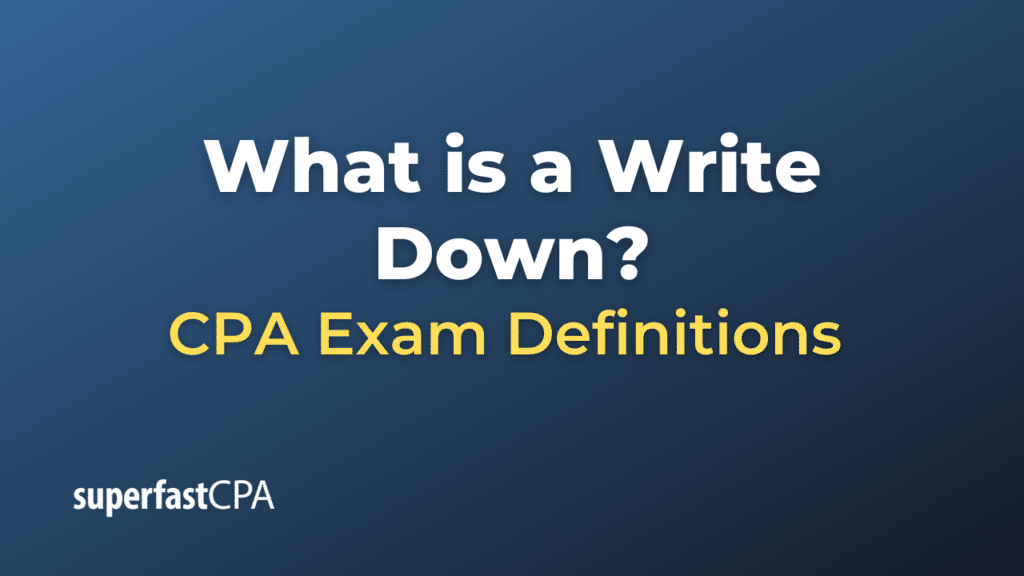Write Down
A “write-down” is an accounting term that refers to the reduction in the book value of an asset to reflect its current fair market value when it is less than the asset’s book value. Write-downs typically occur when assets become impaired and are no longer as valuable as they are recorded on a company’s financial statements. This can be due to various factors such as obsolescence, market decline, or other economic conditions.
A write-down is different from a “write-off,” which entirely removes an asset from the balance sheet. In contrast, a write-down only decreases the asset’s book value but does not entirely eliminate it.
How It Works:
- Identification: A company identifies that an asset (e.g., inventory, goodwill, accounts receivable, etc.) may be overvalued on the balance sheet.
- Valuation: The company assesses the current fair market value of the asset.
- Calculation: The difference between the asset’s book value and its current fair market value is calculated.
- Adjustment: The book value of the asset is then reduced (written down) to its current fair market value, and this reduction is often recorded as an expense, thereby affecting the income statement.
- Financial Reporting: The write-down is reflected in the company’s financial statements, ensuring they accurately represent the company’s financial health.
Example of a Write Down
Here’s an example to illustrate how a write-down works in practice:
- Company: TechRetailer Inc., a retail business specializing in electronics
- Accounting Department: Responsible for maintaining accurate financial records
TechRetailer Inc. has 100 laptops in its inventory, purchased at a cost of $800 each, totaling a book value of $80,000. Due to new models being released, the older laptops have lost their market appeal, and the company has re-evaluated their current market value to be $600 each.
Steps:
- Identification: The Accounting Department notices that the laptops are not selling at their original price, and after a market analysis, they determine that the laptops are now worth only $600 each.
- Valuation: The new market value of the entire stock of 100 laptops is now $60,000 (100 laptops x $600 each).
- Calculation: The write-down amount would be the difference between the original book value and the new market value, which is $80,000 – $60,000 = $20,000.
- Adjustment: The Accounting Department writes down the inventory by $20,000. This write-down is recorded as an “Inventory Write-down Expense” on the income statement, which affects the company’s profitability for that period.
- Financial Reporting: The balance sheet now shows the inventory valued at its current market value of $60,000, providing a more accurate representation of the company’s assets.
Result:
By writing down the inventory, TechRetailer Inc. ensures that its financial statements more accurately reflect the current state of the business. This write-down also signals to stakeholders that the company has experienced an event affecting the value of its inventory, offering more transparency into its operations.
This example illustrates the steps and considerations involved in writing down an asset. It is a common practice and often necessary for businesses to maintain the accuracy and reliability of their financial statements.













